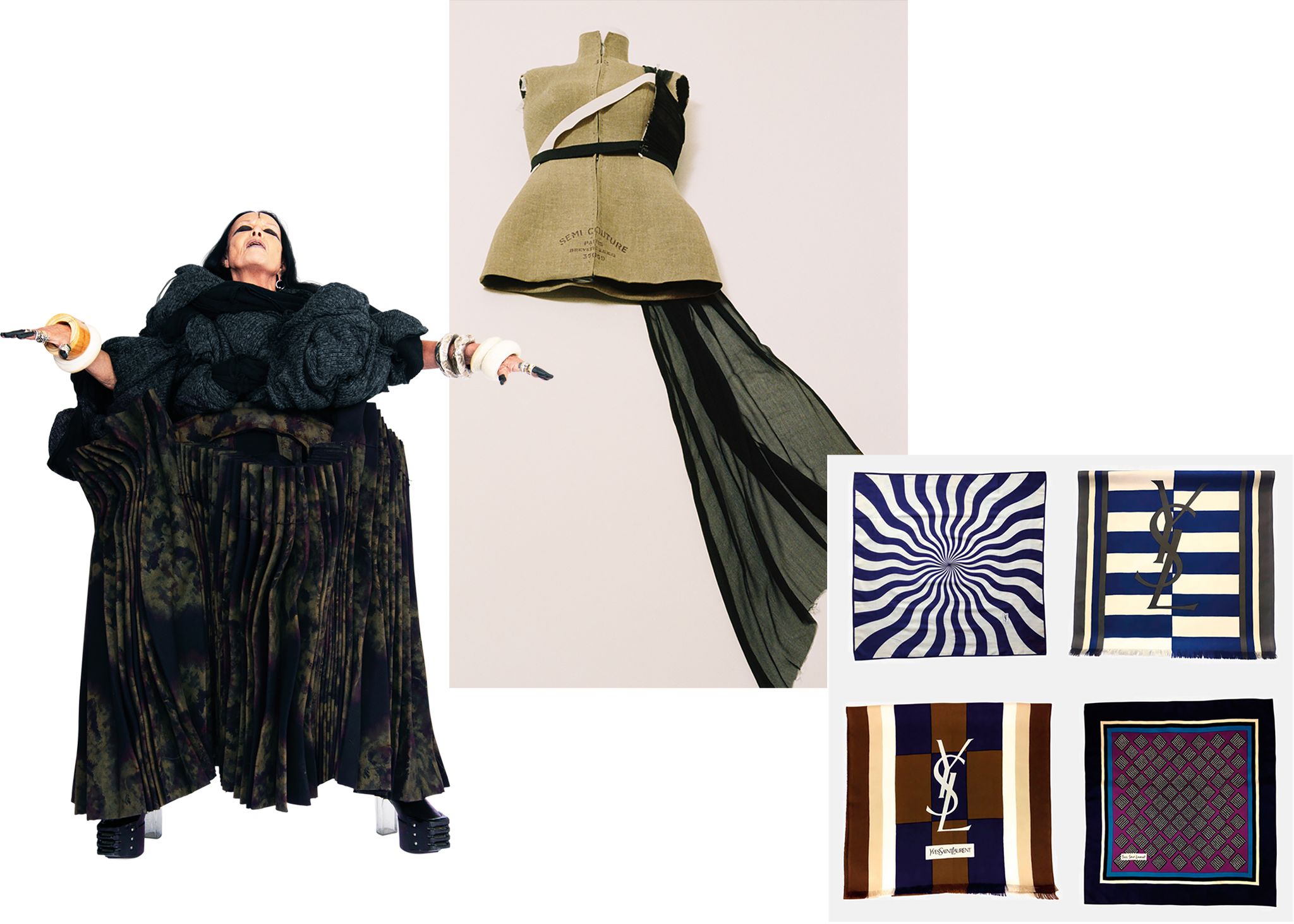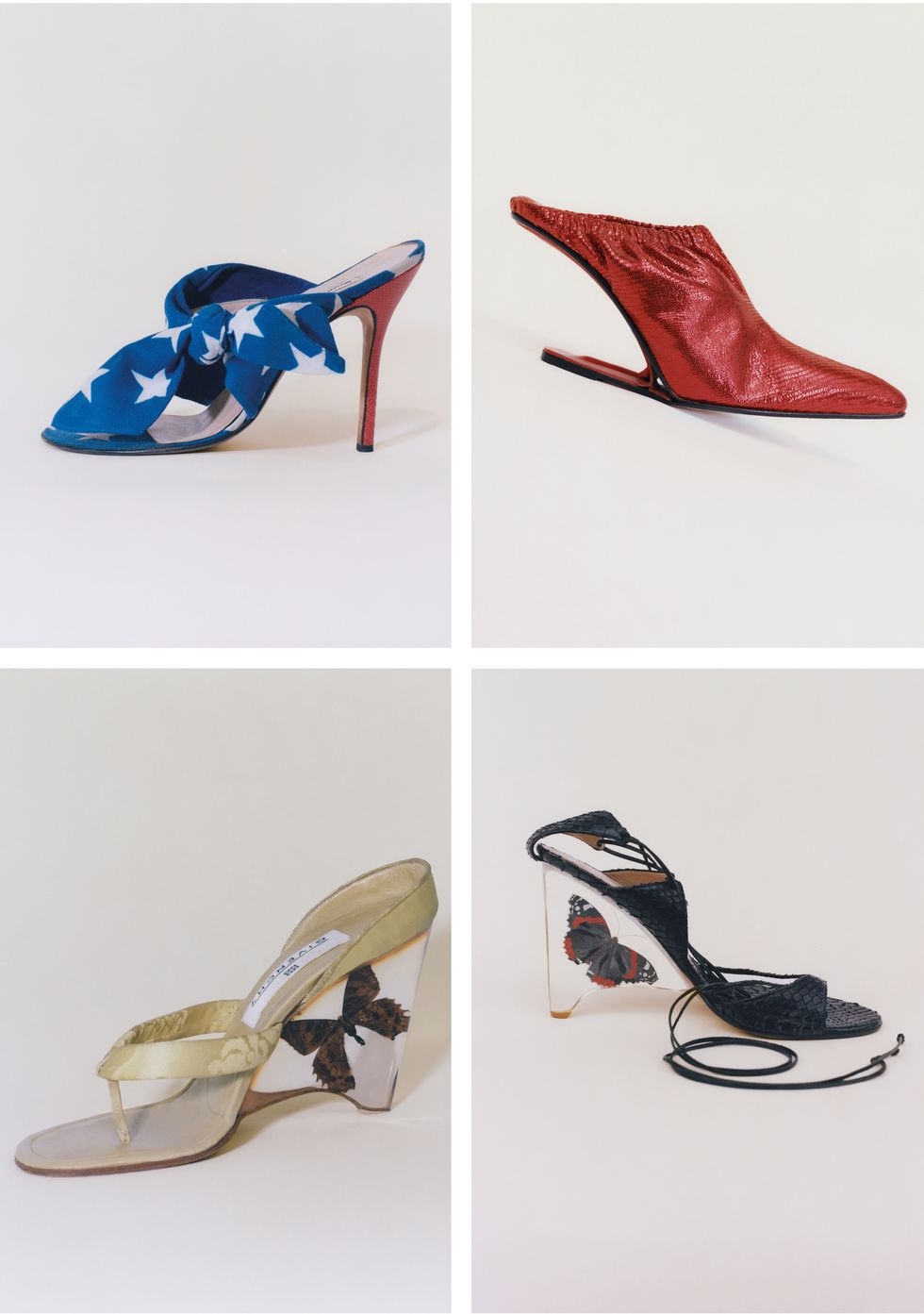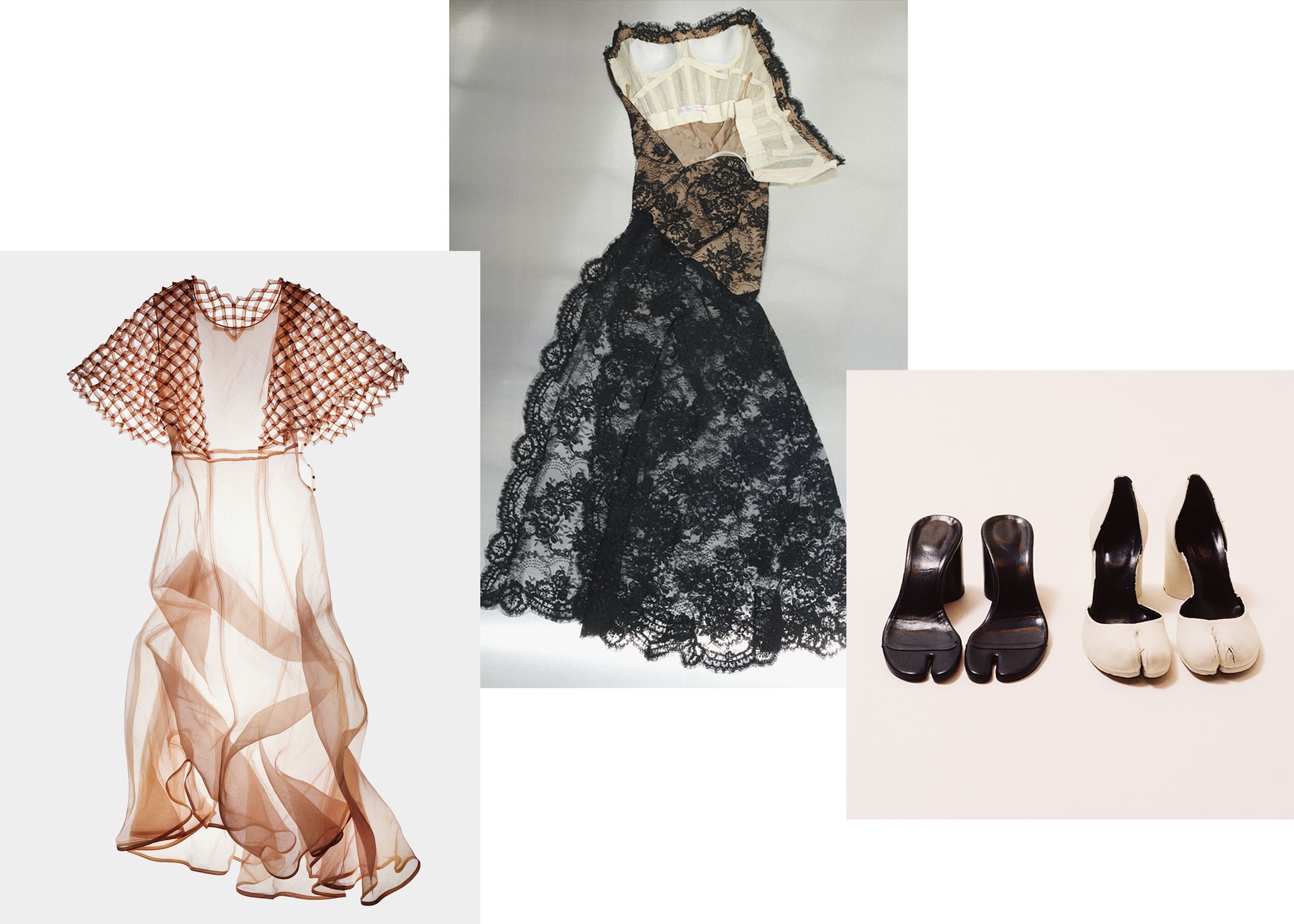What Drives Us to Collect Clothes?
There’s a moment in the life of every clotheshorse when a dedication to sartorial acquisition crosses into a different breed of hunger. For me, for a while, it was an altruistic mission. There I was, in a Thrift Town in San Antonio, Texas, in the late ’90s, a recent transplant from Hong Kong in my teens. The article of clothing was a strong-shouldered black cashmere Byblos cropped jacket from the ’80s. I ignored the sizing, scandalized briefly to have seemingly leapt sizes, and slid it on. The silk lining was cool despite the hundred-degree weather, and the fit exquisite. Life-affirming. To this day, I can invoke the kinesthetic delight of massaging the shoulders of the jacket to learn—with curiosity, then astonishment—that the shape wasn’t due to foam piles dangling precariously from the hilt of the armhole, but rather that the shoulders almost seemed to have been felted into the garment itself. No amount of fondling would reveal its secrets—barring autopsy, it’s doubtful I’ll ever know—and I was spellbound. I glanced at myself in the mirror with a sense of recognition. It wasn’t a costume but a portal. Not into the future, or into some adult occasion that would call for a blazer, but a peek at a heretofore unseen version of myself I’d suspected was always there. Who else would appreciate it with any sense of reverence in that godforsaken strip mall? I considered it a rescue. I had to buy the jacket. No matter the cost ($15).
In London-based stylist Alexandra Carl’s Collecting Fashion (Rizzoli, out this month), each of the 20 chapters covers a subject and their accumulations—and each person recalls feeling just such a quickening. A Rubicon crossed. “It’s really something that guides you,” says Carl of the enduring motivation to collect. “It’s emotional. It’s an intense dedication and calling.” Over Zoom, in the lambent light of a London afternoon, Carl tells me that it was her own attachment to the clothes left in assiduously well-maintained condition by her Danish grandmother that first ignited her curiosity. “Everything has a memory,” she says of this mysterious animating quality of putting something on and living with it. “You have to look closely to realize why it’s an amazing piece. Then you cannot get it out of your head.”
It’s this aspect that distinguishes fashion from other commodified arts: that it instills a hold on its wearer in more ways than one. Rarity and reputation both figure into a piece’s cost at auction or in the marketplace, but it’s the precarity invoked by wearing a rare treasure like, say, a bulbous fall 2017 Comme des Garçons frock that makes it so tantalizing. Some collectors keep things climate-controlled under UV glass. Others very much don’t. “I once had to go to a chiropractor because a pillow dress was putting too much pressure on my neck,” says Michèle Lamy in the first chapter, “but I kept wearing it anyway.” The deeply enigmatic Lamy (photographed by her partner, the designer Rick Owens) admits “when pressed” to owning most of the pieces included in the Costume Institute’s Rei Kawakubo retrospective. Yet she bristles at being reduced to a mere collector. “I hate being considered one,” she says. Her communion is ongoing, vibrant—a living, breathing performance art of her own life inside each new skin—not about ownership. There are spots, stains, rips, and tears in her collection from enduring wear. “Each piece is like a door,” she says. “A vessel to a state of mind.”
Collecting Fashion was the product of about nine months of back-to-back shoots. Spread after spread of flat-lays, some pieces styled and shot on models, or else on the subjects themselves. Others breathtakingly captured midair against light boxes to flaunt the fluidity, the unrivaled diaphanous movement of dresses from the ’30s to the ’70s, made by the designers who defined their era—names like Chanel, Vionnet, Claire McCardell, Dior, Lanvin, Schiaparelli, Jean Patou, and Madame Grès. The haunting precision of the unvarying width of the seams; the stunning judiciousness of the cuts; the delicate, slippery fabric; all triumphantly relevant—alive—despite the passage of time.
The decisions within the book—what to omit, what to include—seem infinite, but Carl’s discernment is unflagging. Her love is for the sleuth. The completist. The obsessive. “It was always the essence of the book,” she says. This gnawing fixation. It’s also what separated some from others. “There are people who have amazing collections, but it was driven by financial access.” Every subject needed to be as emotionally, as dizzyingly, in love—as haunted by detail as she is.
Part magic, part ghost story, part noir detective tale, Collecting Fashion spans Zaha Hadid’s shoe collection, archivist Michael Kardamakis’s encyclopedic Helmut Lang archive (“I want to have all the Pokémon,” he says), Vicky Roditis’s Margiela collection, and Jennefer Osterhoudt’s Galliano and McQueen (she was an accessories designer for both houses). Olivier Châtenet, the designer who would go on to amass a trove of 8,000 pieces, half of which were Yves Saint Laurent, would spend decades accumulating—and then years letting go of—his beloved research materials, returning many of the collections back to design houses like Kenzo and Chloé.
The book and these labors of love, this prayerful devotion, serve not as a screed against external validation, instant gratification, social media, or money. Instead they celebrate a unifying call to action: Preserve the past. Carl considers it a duty that is now invoking attitude changes industry-wide. “Everything’s ripe for referencing,” she says. “Valentino relaunched a collection with just their most successful archive pieces. Even if you look at the recent exhibitions around Prada, Chanel, Gucci, it’s all based on their heritage and their archives. We cannot move forward without knowing much of our past.”
And then there is just the pleasure of the stories. The tantalizing frisson of the find.
Azzedine Alaïa’s collection began as an act of fashion harm reduction. He recalls in a 2017 interview over spaghetti with fashion critic Alexander Fury that a woman bequeathed a shocking-pink buttoned Schiaparelli coat to her daughter, only to have the daughter ask the maid to cut it into a skirt. Another woman brought in a Balenciaga dress. “She wanted a lining for a ball skirt, and she took the dress and cut it to make the lining. I started to see these clothes as a collection. I started to realize—I had to protect these pieces.” Alaïa, who was elusive as to the extent of his collection, was posthumously revealed to have rescued at least 22,000 such pieces. All containing DNA, blueprints, and maps that don’t solely valorize the past, but tell us exactly where we are in this moment.
This article appears in the April 2024 issue of ELLE.





